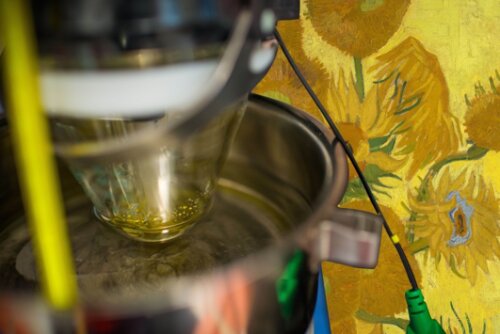Understanding the reactivity of (semiconductor) pigments provides vital information on how to improve conservation strategies for works of art in order to avoid rapid degradation or discoloration of the pigments. Even more, the gained insights and strategies are easily transferable to all materials that capture light and suffer from discoloration (e.g. photovoltaics).
Fading has two main causes. Both physical (e.g. light, temperature) and chemical (e.g. salts/ambient chemical environment) parameters might induce deterioration. Lately (photo)electrochemistry is being used in our lab as a fast technique for identifying pigment degradation products and as a tool for monitoring pigment degradation processes in the aim of predicting harmful/favorable environmental conditions This method does not require lengthy exposure of the pigments to (chemical or physical) degrading agents in an artificial ageing chamber.

Key publication:
- Unraveling the Role of Lattice Substitutions on the Stabilization of the Intrinsically Unstable Pb2Sb2O7 Pyrochlore: Explaining the Lightfastness of Lead Pyroantimonate Artists’ Pigments, A. Marchetti, R. Saniz, D. Krishnan, L. Rabbachin, G. Nuyts, S. De Meyer, J. Verbeeck, K. Janssens, C. Pelosi, D. Lamoen, B. Partoens and K. De Wael Chemistry of Materials (2020), 32 (7), 2863-2873.